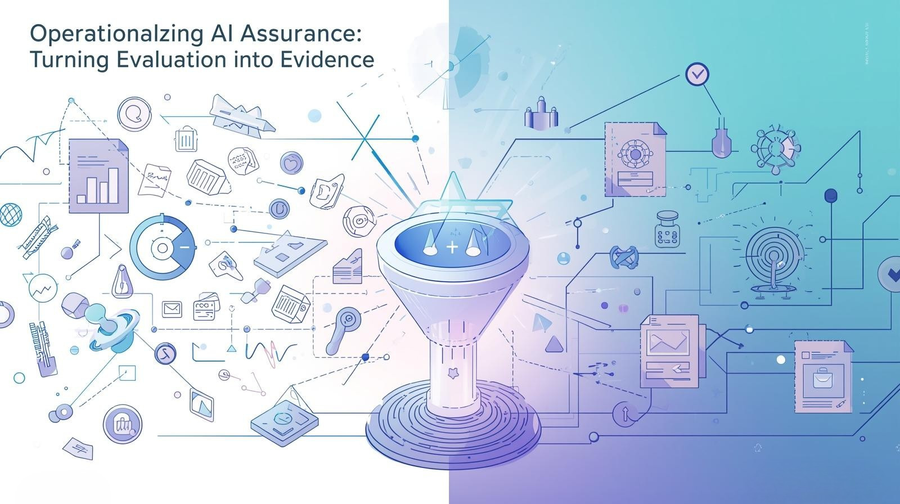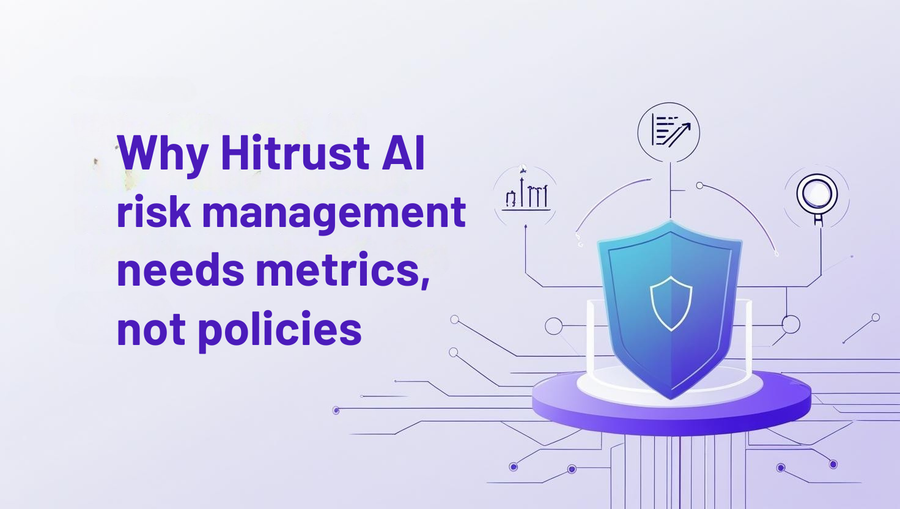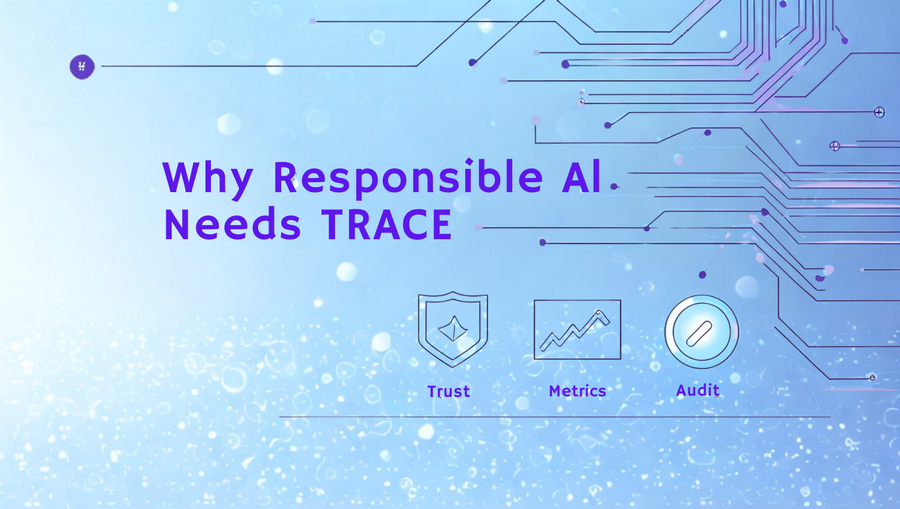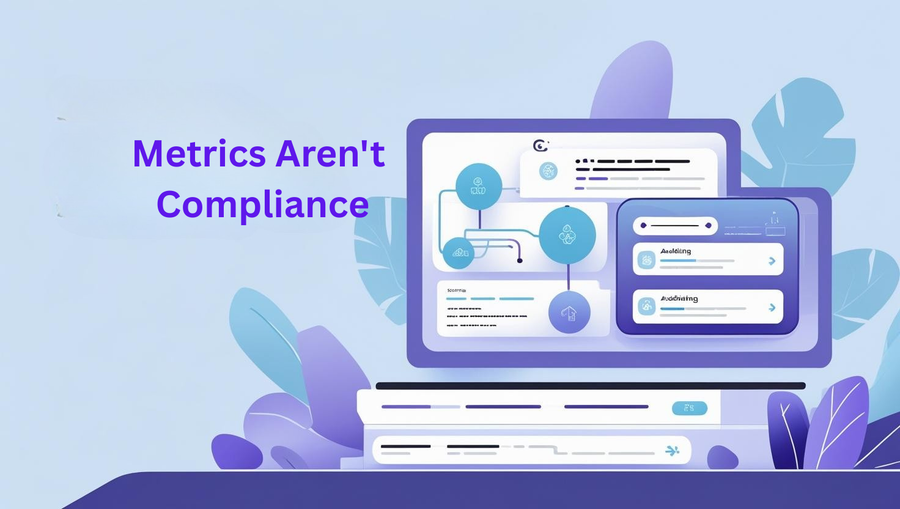“AI systems are only as trustworthy as the evidence behind them.”
—Dilip Mohapatra, Founder @ CognitiveView
From ChatGPT‑powered chatbots in emergency rooms to credit‑scoring models approving mortgages in seconds, artificial intelligence is already making life‑changing decisions.
Regulators have noticed. The EU AI Act, NIST AI RMF, and ISO 42001 all demand something most teams still struggle to deliver: auditable proof that their models behave responsibly.
The modern MLOps stack is awash with accuracy charts, BLEU scores, and drift dashboards. Yet when an auditor asks, “Which statutory clause does this metric satisfy?” the room goes silent. Metrics ≠ Evidence. The gap between the two can cost deals, delay launches, and invite fines.
The Metrics‑to‑Evidence Gap
You’re probably already logging hallucination rates or bias scores. Great—but those numbers are only half the story. Decision‑makers need three additional ingredients:
- Context – Is 1.8 % hallucination acceptable for a medical chatbot? Probably not.
- Controls – What action fires when a metric crosses a threshold?
- Credibility – Can an auditor verify the data chain end‑to‑end?
| Today’s Reality | What Governance Really Needs |
|---|---|
| Scores scattered across Grafana, DataDog, and notebooks | A single source of truth tying metrics to clauses |
| Annual PDF audits | Continuous, API‑first assurance |
| Metrics lack domain context | Risk thresholds tuned to use case & industry |
Without those links, metrics remain interesting—but not defensible.
Meet TRACE — A Five‑Pillar Operating Model
The Cognitiveview Responsible AI TRACE Framework turns raw telemetry into audit‑ready evidence. Think of TRACE as the conveyor belt that moves a metric through five quality gates, adding context and credibility at every step:
| Pillar | Key Question | What TRACE Produces |
| Trust | Is the metric reliable? | Canonical ID, source hash, version history |
| Risk | How serious is the exposure right now? | Low/Elevated/Unacceptable bucket tied to business impact |
| Action | What must we do about it? | Pre‑approved control playbook + SLA timer |
| Compliance | Which rule does it satisfy? | Live clause ledger (EU AI Act, NIST, ISO, GDPR…) |
| Evidence | Can an auditor verify it? | Cryptographically sealed Assurance Envelope |
Why TRACE Resonates With Developers
Traditional GRC tools expect data scientists to fill out forms. TRACE flips the script:
- API‑first – Ship a JSON payload; get back risk tier, control ID, clause mapping.
- Open‑source friendly – Bring your favourite eval packs: Fairlearn for bias, DeepEval for RAG truthfulness, AIF360 for fairness testing.
- CI/CD native – Governance checks run on every pull request, catching issues long before production.
Goodbye PowerPoint audits. Hello pipeline‑native compliance.
A Walk‑Through: Hospital Chatbot in the EU
- Signal appears – Nightly eval logs
Gen_HallucinationRate = 1.8 %. - Context matters – TRACE knows this is a high‑risk medical setting. The accepted threshold is 1 %.
- Risk classified – Residual risk marked Elevated.
- Action triggered – Control “Enable enterprise knowledge grounding” fires automatically; SLA 24 hours.
- Compliance mapped – Event logged under EU AI Act Article 15 (robustness & accuracy).
- Evidence sealed – Metric, decision, and action hashes linked in an Assurance Envelope on an immutable ledger.
Time to compliance proof: < 2 minutes. No frantic email threads, no last‑minute PDF exports.
Five Practical Steps to Ship Compliant AI—Without Slowing Dev Velocity
- Adopt open evaluation libraries
Leverage community‑audited probes (Fairlearn, Giskard) for bias, robustness, and privacy. They slot directly into TRACE’s Metrics API. - Author compliance playbooks
Store thresholds, fallback actions, and owners in YAML. TRACE loads these at runtime—so governance isn’t guesswork. - Gate releases in CI/CD
Set your pipeline to fail if TRACE returns Unacceptable. Catch issues before they hit production. - Run governance fire‑drills
Simulate incidents quarterly. Trace a metric to a clause, open the envelope, and prove the chain in five minutes or less. - Set cross‑functional SLAs
Data science owns metric quality; security owns controls; risk/legal own clause mapping. TRACE stitches the pieces into one workflow.
Why This Matters Now
Regulators are no longer asking “if” AI should be audited—they’re asking “how soon.” Early adopters of continuous, evidence‑first governance already report:
- 40 % faster enterprise deal cycles thanks to real‑time clause dashboards.
- 60 % lower audit prep cost because cryptographic envelopes replace random sampling.
Meanwhile, teams that keep compliance as a quarterly afterthought will face longer procurement reviews—and rising regulatory scrutiny.






